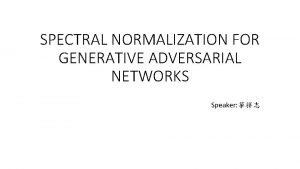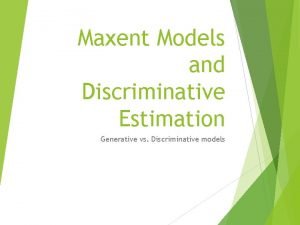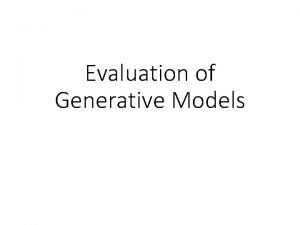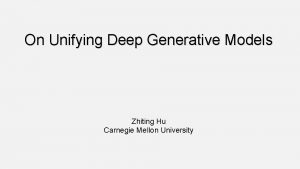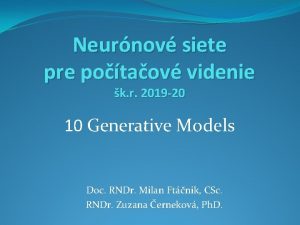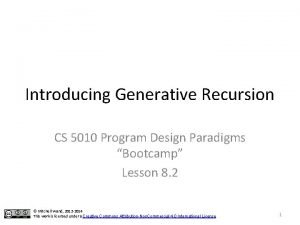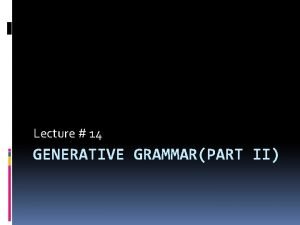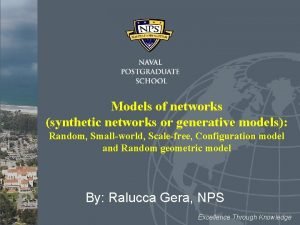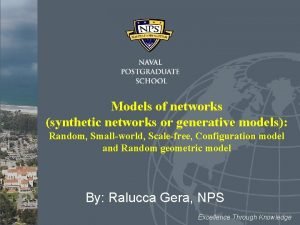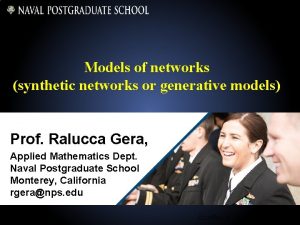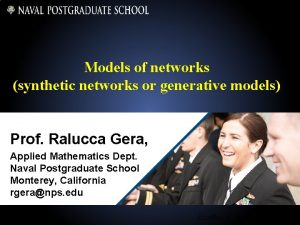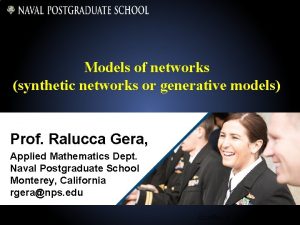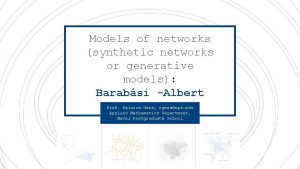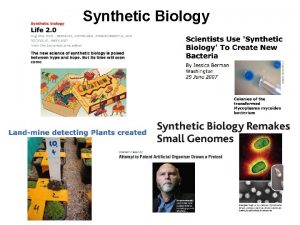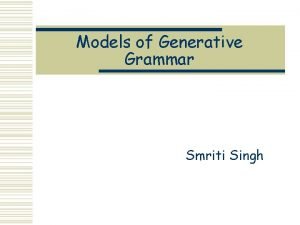Models of networks synthetic networks or generative models











- Slides: 11

Models of networks (synthetic networks or generative models): Watts-Strogatz Prof. Ralucca Gera, rgera@nps. edu Applied Mathematics Department, Naval Postgraduate School Excellence Through Knowledge

Learning Outcomes • Identify network models and explain their structures; • Contrast networks and synthetic models; • Understand how to design new network models (based on the existing ones and on the collected data) • Distinguish methodologies used in analyzing networks.

Why care? • Epidemiology: • A virus propagates much faster in scale-free networks. • Vaccination of random nodes in scale free does not work, but targeted vaccination is very effective • Create synthetic networks to be used as null models: • What effect does the degree distribution alone have on the behavior of the system? (answered by comparing to the configuration model) • Create networks of different sizes • Networks of particular sizes and structures can be quickly and cheaply generated, instead of collecting and cleaning the data that takes time

Reference network: Regular Lattice • Source: http: //mathworld. wolfram. com/Circulant. Graph. html 4

Reference network: Regular 1 dimensional Lattice Source: http: //mathworld. wolfram. com/Circulant. Graph. html 5

Source: http: //phys. org/news/2013 -05 -intriguing-state-previously-graphene-like-materials. html 6 Reference network: Regular 2 dimensional Lattice The higher dimensions are generalizations of these. An example is a hexagonal lattice is a 2 -dimensional lattice: graphene, a single layer of carbon atoms with a honeycomb lattice structure.

7 Watts-Strogatz: Small World Graphs (1998) Reference: http: //www. cis. hut. fi/Opinnot/T-61. 6040/s 07/lecture 7. pdf

Small worlds, between order and chaos Small worlds the graph on the left has order (probability p =0), the graph in the middle is a "small world" graph (0 < p < 1), the graph at the right is complete random (p=1). Source: http: //www. bordalierinstitute. com/target 1. html

• <C_p> is the average clustering coefficient for the graphs that have been re-wired with probability p • <C_0> is the average clustering coefficient for the lattice, i. e p=0, • <l_p> is the average path length for the graphs that have been re-wired with probability p • <l_0> is the average path length for the lattice, i. e p=0, Normalized average path length and clustering coefficient https: //pdfs. semanticscholar. org/8 c 4 c/455 de 44 fa 99 e 73 e 79 d 6 fddf 008 ca 6 ae 0 f 9 aa. pdf Rewiring probability 9

Generating Watts-Strogatz networks in Python. 15 is the rewiring probability http: //networkx. lanl. gov/reference/generated/networkx. generators. random_graphs. watts_strogatz_graph. html#networkx. generators. random_graphs. watts_strogatz_graph 10

Main References • Newman “The structure and function of complex networks” (2003) • Estrada “The structure of complex Networks” (2012) • Barabasi “Network Science” (online: http: //barabasi. com/networksciencebook/) References to the classes that exist in python: • http: //networkx. lanl. gov/reference/generat

